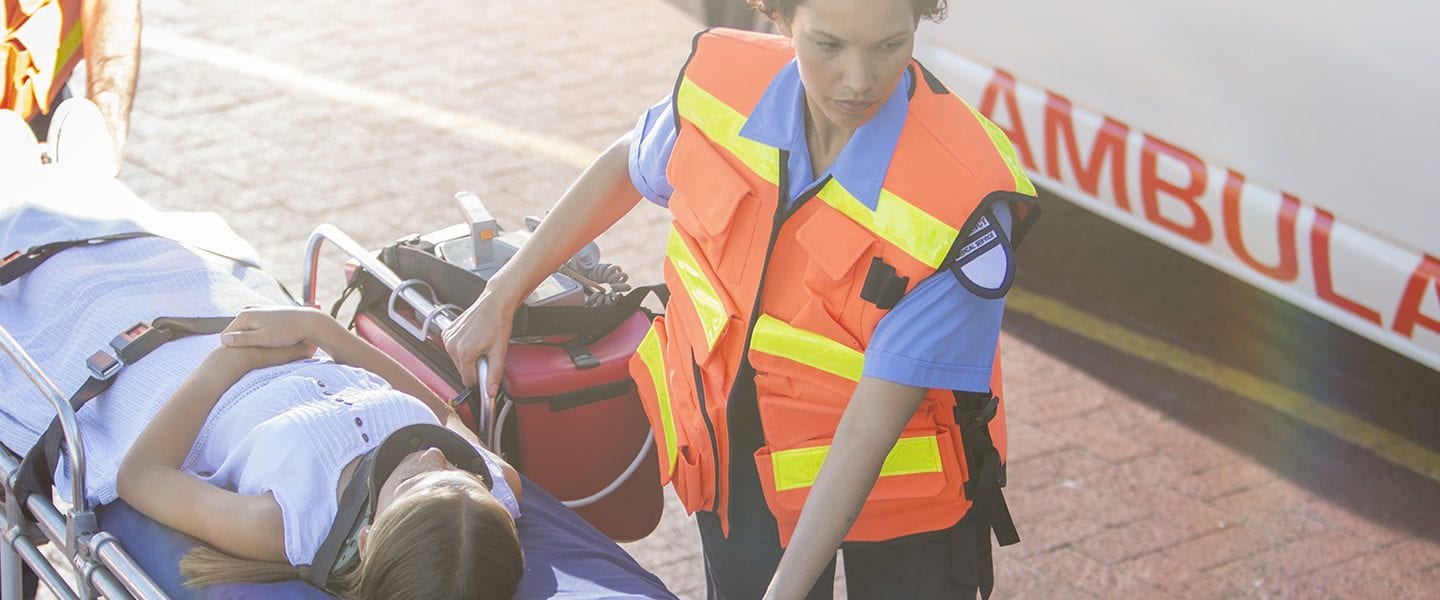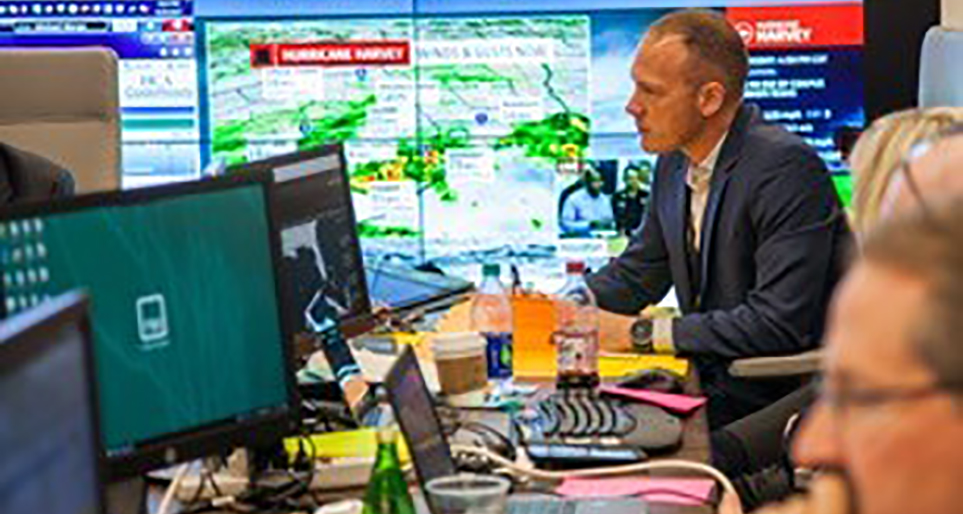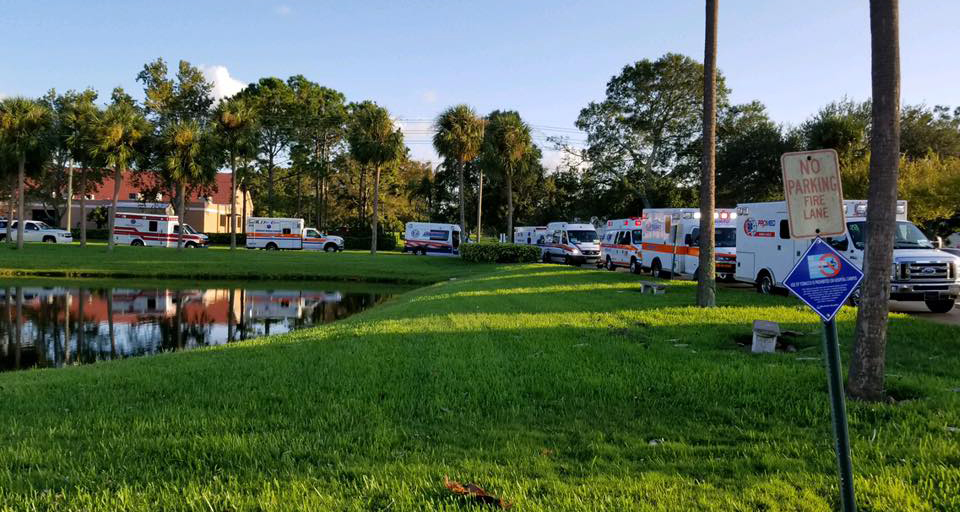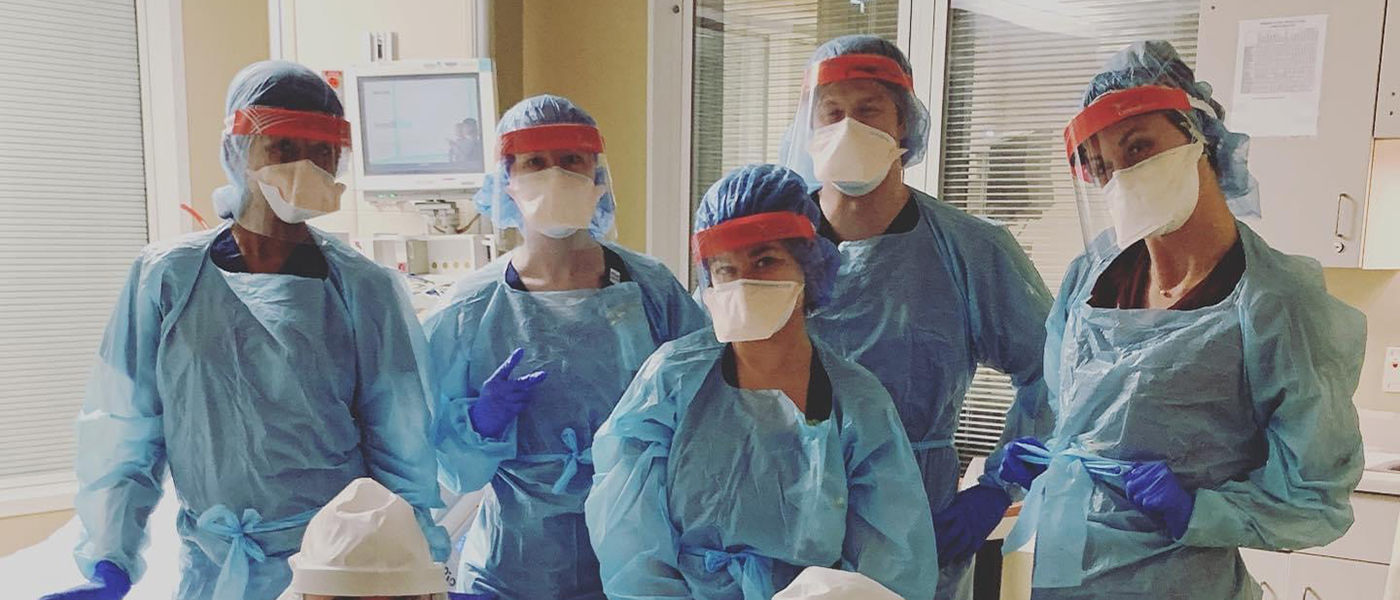How emergency operations ensure the continuity of patient care


Over the past 50 years, through hurricanes, tornadoes, and other similar scenarios, HCA Healthcare has learned a great deal about emergency preparedness and response. The efforts before, during and after hurricanes Harvey and Irma show how strong the company is when it comes to learning from every situation, then putting those best practices into action going forward.
When the storm turned northward, the HCA Healthcare emergency operations team knew two things: hospitals and employees were going to be affected, and the company was prepared to swing into action.
The storm in question was Hurricane Harvey, which had entered the Gulf of Mexico with the potential of making landfall in either the United States or Mexico. “When it veered toward Houston, what had been emergency plans and drills soon became full-on emergency response and support operations,” says Mike Wargo, Assistant Vice President of Enterprise Preparedness and Emergency Operations.
“We watch every storm that comes through, so we’d been monitoring Harvey as well as other storms that were developing,” Wargo says. “When it intensified and its path became clear, we only had about four days’ notice, which was shorter than we might get in a typical hurricane situation. To an extent it provided added challenges, but we were ready to get going.”
Beyond the initial devastation, the challenge presented by Harvey was intensified by the days of rain and record-breaking flooding that ensued. Teams couldn’t fly into Houston, and roads were impassable as well.
“We can usually respond to the impact of a hurricane within 24 hours, but in this case, it was more like 72 hours because of the widespread flooding. There was just no serviceable option to get there,” Wargo says. “We regrouped and found ways to get our people in there.”

Mike Wargo, Assistant Vice President of Enterprise Preparedness and Emergency Operations, was a constant presence in the command center at HCA's Nashville headquarters.
And then came Irma. Now, in addition to dealing with the damage from wind, rain and flooding in Houston, the emergency operations team was looking at the potential for massive damage to HCA Healthcare facilities across Florida, as well as up into South Carolina. Irma wasn’t a rain event like Harvey, it was a more typical hurricane threat with high winds and significant storm surges that knocked out power for days, even weeks in some areas. That made getting in touch with employees difficult and required fast deployment of relief teams to assess damage and, as in Houston, to ensure that staff was safe and patient care was uninterrupted.
HCA Healthcare was up to the challenge. The organization’s size and scale enabled it to respond quickly — transferring patients away from storms and employees into affected areas. But, as Wargo says, it’s the culture of patient care above all else that really sets HCA Healthcare apart, both in everyday operations and in severe emergencies such as these.
“The fact that we have a team dedicated to emergency planning year-round, not just during hurricane season, is evidence of that,” he points out. “Also, in the midst of the storms and recovery, cost was never an obstacle. The message from the top down was always, ‘do what is right,’ for our patients, staff and community.’”
HCA Healthcare Employees Respond As One
In addition to the emergency operations centers that were enacted in the Nashville corporate office as well as in the affected divisions, the storms were being watched by employees across the company. Offers of aid and assistance began pouring in, and so coordination of volunteers began alongside deploying relief nurses and other staff.
“There was not a single division that didn’t do something, from providing people to sending assets, to assist Houston and, eventually, Florida,” Wargo says. “When those two storms happened so close together, it created stressors not just for us, but for state and federal government agencies. Everyone was spread thin, and HCA Healthcare rallied together to show that no matter where you work, no matter what you do, we are going to make sure there is someone there to support you.”
Everyone was spread thin, and HCA Healthcare rallied together to show that no matter where you work, no matter what you do, we are going to make sure there is someone there to support you.— Mike Wargo, Assistant Vice President of Enterprise Preparedness and Emergency Operations
Also helping to shepherd plans into action, as well as coordinate multistate relief efforts, was Jake Marshall, Senior Director of Enterprise Preparedness and Emergency Operations, who had only been with HCA Healthcare’s emergency operations team for three months after relocating from HCA Healthcare’s Spotsylvania Regional Medical Center in Virginia.
Many NICU patients from Houston-area hospitals were evacuated to St. David’s Medical Center in Austin.
“It has been a learning opportunity for me, such as when I heard that we were getting five patients from a skilled nursing facility who only needed oxygen,” Marshall says. “In Virginia, many community emergency shelters are required to have oxygen, but in Florida, hospitals are designated as a medical-need shelter for certain populations. If those people were assigned to an HCA Healthcare hospital and it was being evacuated, we had to make sure we got them to another facility with stable infrastructure so we could care for them. That was a huge challenge, and one that was met in every instance.”
In fact, making sure every patient, from NICU babies to those on pediatric and adult units, received the care they needed was the core focus on HCA Healthcare leadership.
“Across the industry, when air medical teams report to their dispatch centers, they say how many souls they have on board,” Wargo says. “That terminology carried through. Every one of our facilities was represented on our walls, each filled with Post-it notes showing how many souls were in each facility and where they were at any time. Our senior leadership, including Milton Johnson and Sam Hazen, wanted constant updates on how many ‘souls’ we were responsible for, and if we have the appropriate resources to manage and care for them. We ran out of wall space. We had more than 12,000 patients across 80 facilities, and we looked after every single one of them. We didn’t lose a single patient. That’s the scope and scale of what HCA Healthcare can do, and that’s just huge.”
After The Storms: Coordinating The Recovery
Once the storms had passed, the emergency team still had its hands full coordinating patient movement, facility assessment and, importantly, the physical and mental state of employees who had weathered the events.
HCA Healthcare has strong partnerships with first responders and local law enforcement agencies in the communities it serves, which helped when it was clear that transport vehicles and other infrastructure needed to be mobilized.

Ambulances line up outside of Northside Hospital in the aftermath of Hurricane Irma.
“Our biggest challenge in Houston was the staff, the people who were affected by the storm,” Wargo says. “Through HealthTrust Workforce Solutions, Parallon Business Solutions, as well as HCA Healthcare’s Clinical Services and Physician Services Groups we managed the relief staff part of the equation very well. But the community infrastructure there is going to take a long time to recover. That has meant not just our employees and our facilities, but also dealing with the demand on healthcare that rose as people came back home. For instance, many evacuees didn’t take their medications with them — they were healthy when they left, but they came back sick. Many other systems were still closed, and HCA Healthcare was open, so we saw increases of 120 percent to 160 percent in our emergency rooms. It was almost a secondary disaster.”
There, as in Florida, volunteers who were not involved in patient care manned information tables and visited every hospital department to help employees understand how to access EAP and other HR services, as well as apply for Hope Fund support.
The Learning Curve Begins
The relief had two key components, both focused on helping affected employees and providing seamless patient care. One was deploying personnel, and the second meant moving to downtime analog systems when a hospital’s electronic systems were offline. For instance, vital needs such as medication delivery required not just forms, but runners to get prescriptions from the pharmacy to the patient floors.
“There are a lot of interdependencies in patient care, and all that was going toward downtime or paper operations,” Wargo says. “The automation was gone, at least for a short while, and the challenge was to move to paper operations without interrupting patient care. Our people did that because the plans were in place, but we also saw some amazing innovations because people got creative. We’re going to work to capture that, so we can prepare even better for the next emergency.”
Scalability will be the key metric in that process. Many on-the-ground innovations from the storms and other recent events have Wargo and many others excited already.
“We have a very sophisticated paper form for evacuations, and nurses were consulting it every few hours,” he explains. “It tells us which patients are the priorities at any given time. That evolved from a lightning strike at Bayonet Point Regional Medical Center last year, when they had to do a no-notice evacuation. They created a system where every four hours a manual census was printed, so they could verify the patients who were in-house, and so the nursing supervisor could provide an updated form to every shift. From that came a log of what patients charge nurses were rounding on, which cases were more critical and team notes. That has led to a system where we know how many critical care or air transports we need, and who has to leave first. As those patients go, they are de-listed and everyone knows they are out of harm’s way.”
In the operations center, emergency response has morphed into a “hot wash,” a military term that describes a process that assesses what was done well — and what needs immediate follow-up action.
“The next storm could be a week away, so we need to be immediate,” Wargo says. “We began with our five main areas: clinical, infrastructure, support, administrative and intelligence. We are learning what we can do differently that will improve the next response, or our resilience. We will share those best practices so that all our facilities can learn and adapt quickly.”
One thing about HCA Healthcare is that every area, from human resources to government affairs, is working to help those communities.— Jake Marshall, Senior Director of Enterprise Preparedness and Emergency Operations
Local partnerships key to rapid response
HCA Healthcare worked diligently in every affected area to make sure employees could quickly access FEMA agency personnel and others to begin the rebuilding process.
HCA Healthcare facilities in every community have deep and successful partnerships with local law enforcement, first responders and related agencies. Those have always been beneficial to providing fast, effective patient care, particularly in emergencies. In these two disastrous storms, those close ties saved lives.
“We have a Healthcare Preparedness Coalition, which is something that exists in every community where we operate,” Wargo explains. “It’s in place at the hospitals, as well as at the division level and in our corporate offices. It allows us to coordinate and to reach up to the state and federal level partners. That means that whether it’s police, fire or EMS, or contacting local officials, the mechanism is in place for those communications to happen.”
This is just another example of the efficiency and effectiveness HCA Healthcare’s size and scope bring to the table. For instance, when East Houston Medical Center flooded, its leadership team sheltered in place. They were joined by several Houston police officers, who’d been trapped alongside them. All were rescued by a police boat, five days later.
At other facilities in Texas and Florida, paramedics weathered the storms in hospitals. This meant they were on hand to help evacuate patients, as well as make their colleagues aware of needs.
Other partners, including 1,000 security officers, kept order and made sure that equipment worked or was restored to working order quickly.
In the days before the storms hit, HCA Healthcare also was finalizing a national agreement for air evacuation. This would involve a private contractor and the use of its helicopters and airplanes, and it was put into place temporarily following each hurricane so that patients, staff and supplies could be transported as needed.
“They had hundreds of medical staff assigned to support us, as well as helicopters and planes, to do air evacuations and supply missions,” Wargo says.
“This is the kind of resource that HCA Healthcare can deploy. No other private system had that kind of agreement in place, and this helped us keep our doors open. We had a motto of ‘keep calm and continue care,’” Wargo says. “But if these relationships are not in place that’s not going to happen.”


